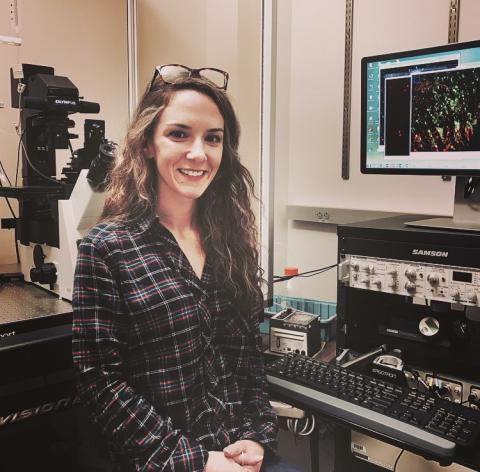
Email: slm10@wildcats.unh.edu
Biological Sciences: Integrative and Organismal Biological Sciences - MS
Research Topic: Cholecystokinin and Endocannabinoid Receptor Expression in the Thalamic Reticular Nucleus
There are roughly 100 billion neurons in the human brain that communicate with each other via electrical and chemical synapses in order to process the endless information coming in from the environment around us. Although the cerebral cortex has a reputation for playing the biggest role in this sensory and motor processing, the thalamus also significantly contributes by relaying these incoming signals to the cortex. This is why the thalamus is regarded as the "gatekeeper" of sensory information. My research is focused on the thalamic reticular nucleus(TRN) that is strategically placed between the thalamus and cortex and is considered to be the "guardian" of the thalamus.
The TRN is made up entirely of inhibitory neurons that project only to relay cells in the thalamus- providing the main source of inhibitory control on those cells and as a result- inhibitory control on the messages that the thalamus sends to the cortex. The TRN is also responsible for the production of sleep spindles that have been implicated in memory, learning, seizures, Alzheimer's disease, and a wide array of mental illnesses. My research is specifically interested in a subset of neurons within the TRN that express one of the most ubiquitous neuropeptides in the brain, cholecystokinin, as well as the co-expression of cannabinoid receptor 1. Understanding the electrical and chemical properties of these neurons can help us better understand the function of this critical structure in the brain and hopefully shed light on how to better treat disorders associated with its dysfunction.
